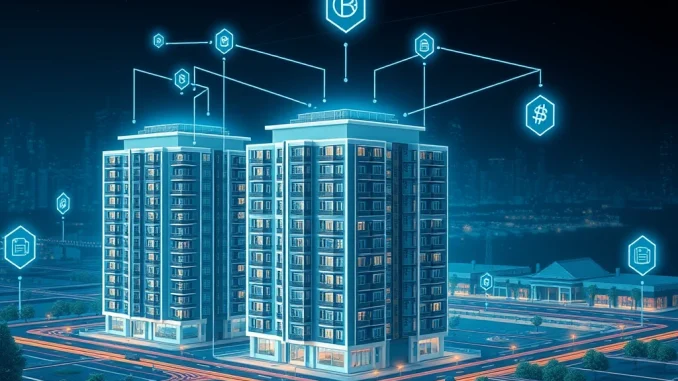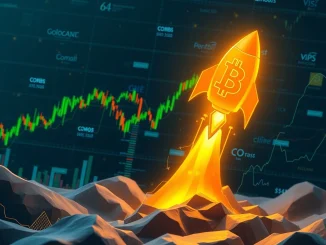
Exciting news is buzzing in the world of digital assets and traditional finance! A major move is underway that bridges the gap between tangible wealth and the blockchain: the launch of a significant tokenized real estate fund. For anyone interested in the evolving landscape of investments, especially where crypto meets traditional markets, this development signals a growing trend towards the digitization of valuable assets.
What is This Breakthrough Tokenized Fund?
U.S. real estate asset management firm Patel Real Estate Holdings (PREH) has announced the launch of a substantial tokenized fund valued at $100 million. This fund is set to operate on the Chintai network, a platform specifically designed for handling real world assets (RWAs) on the blockchain. The fund focuses on acquiring and managing vintage Class A multifamily homes situated within the top 20 markets across the United States. This strategic focus targets high-demand, stable residential properties, offering a potentially attractive investment profile.
Why Tokenize Real Estate and Real World Assets?
The concept of real estate tokenization involves issuing digital tokens on a blockchain that represent ownership or fractional ownership in a property or a portfolio of properties. This process transforms illiquid assets like real estate into digital tokens that can be easily traded and managed on a blockchain network. The benefits are numerous:
- Increased Liquidity: Traditionally, selling real estate is a lengthy and complex process. Tokenization allows investors to buy and sell fractions of properties more easily on digital exchanges.
- Fractional Ownership: Investors can own a portion of a high-value asset, like a Class A multifamily building, with a smaller investment than required for direct purchase. This lowers the barrier to entry for potential investors.
- Transparency: Blockchain technology provides a transparent and immutable record of ownership and transactions.
- Efficiency: Smart contracts can automate processes like dividend distribution, voting rights, and compliance checks, reducing administrative costs and time delays.
- Global Access: Tokenized assets can potentially be accessed by investors worldwide, expanding the pool of potential buyers and sellers.
These advantages are driving the growing interest in tokenizing various real world assets, from art and collectibles to infrastructure and, notably, real estate.
How Does Blockchain Real Estate Work with Chintai?
The PREH fund leverages the Chintai network, which is built to handle the complexities of regulated financial assets on the blockchain. Platforms like Chintai provide the necessary infrastructure for issuing, managing, and trading security tokens that represent ownership in assets like real estate. This includes features for identity verification (KYC/AML), compliance with securities regulations, and secure transaction processing. By using an RWA-focused network, PREH aims to ensure that the fund operates within a compliant and robust digital framework, bringing the benefits of blockchain real estate to investors in a structured manner.
What Does This $100M Tokenized Fund Mean for Investors?
For investors, this launch represents a significant opportunity to gain exposure to institutional-grade real estate through a tokenized structure. Investing in vintage Class A multifamily properties in top US markets is a strategy often pursued by large institutions due to the potential for stable income and appreciation. By tokenizing access, PREH is making this type of investment more accessible. The $100 million size of the fund indicates serious capital entering the tokenized real estate space, suggesting growing confidence in the technology and the asset class.
Consider the differences compared to traditional real estate investment:
| Feature | Traditional Real Estate | Tokenized Real Estate Fund |
|---|---|---|
| Minimum Investment | High (often hundreds of thousands or millions) | Potentially Lower (depending on token price/platform) |
| Liquidity | Low (long sale cycles) | Potentially Higher (tokens tradable on platform/exchange) |
| Fractional Ownership | Difficult (requires complex legal structures) | Easy (represented by tokens) |
| Transparency | Limited (requires due diligence) | High (transactions on public/permissioned ledger) |
| Transfer Process | Slow, Paper-heavy | Fast, Digital |
Challenges and Considerations for Real Estate Tokenization
While the potential is significant, challenges remain. Regulatory clarity around security tokens and real world assets is still evolving in many jurisdictions. Investor education is crucial, as many are unfamiliar with blockchain-based investments. Technical risks, platform security, and the need for robust legal frameworks linking the physical asset to its digital representation are also important considerations. Market risk, specific to the real estate assets held by the fund, also applies.
The Future of Real World Assets on Blockchain
The launch of PREH’s $100 million fund is a strong indicator of the increasing adoption of real world assets on blockchain networks. As infrastructure improves and regulatory clarity emerges, we can expect to see more traditional asset classes being tokenized. This trend has the potential to unlock liquidity, create new investment opportunities, and make markets more efficient. The intersection of finance, real estate, and blockchain technology is creating exciting possibilities for the future of investing.
Conclusion
Patel Real Estate Holdings’ launch of a $100 million tokenized fund on the Chintai network marks a significant step forward for the adoption of tokenized real estate. By leveraging blockchain technology to offer fractional ownership and increased liquidity in desirable Class A multifamily properties, this initiative highlights the transformative potential of tokenizing real world assets. While challenges exist, the trend towards real estate tokenization is gaining momentum, promising a future where accessing and trading tangible assets can be as seamless as digital currency transactions. This development is a compelling example of how blockchain is poised to reshape traditional financial markets.



